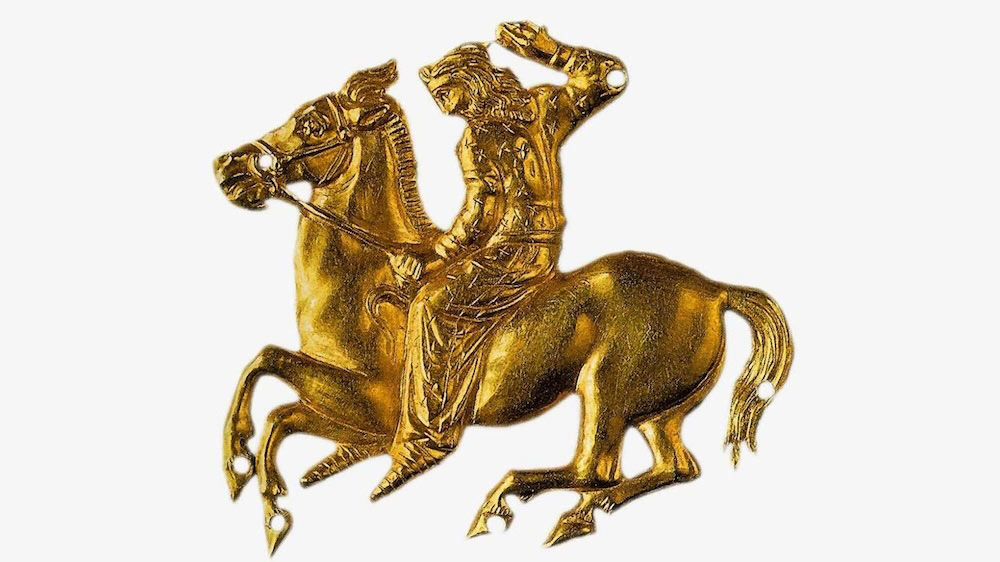
Name: A Scythian on horseback
What it is: A gold plaque depicting a Scythian riding a horse
Where it is from: The Black Sea region in what is now Turkey
When it was made: Around 400 to 350 B.C.
Related: Cave of Swimmers: 9,000-year-old rock art of people swimming in what's now the arid Sahara
What it tells us about the past: The Scythians were a diverse but culturally-related group of nomadic people who lived in what's now southern Siberia, Central Asia and the northern Black Sea region from about 800 to 300 B.C.
However, not much is written about these fearsome warriors, and what we do know comes from outside perspectives. For example, in the fifth century B.C., Greek historian and geographer Herodotus wrote, "None who attacks them can escape, and none can catch them if they desire not to be found."
Much of the Scythians' history can be pieced together through the artifacts they left behind. Not only were they prolific goldsmiths, but they're also known for breeding domesticated horses. A 2017 study found that the Iron Age Scythian nomads managed to avoid inbreeding horses and selected for specific coat colors and robust forelimbs. In fact, the majestic animals often crop up in goldworks created by the group, including this plaque of a warrior on horseback, according to The Gemmological Association of Great Britain.
In the piece, a bearded man rides into battle, a weapon in hand, ready to strike his enemy. Unlike other cultural groups, the Scythians were known for using elaborately decorated weapons — such as daggers, knives and arrowheads — that were often inlaid with gold. Many of these items have been discovered in burials, according to the journal ArcheoSciences.







